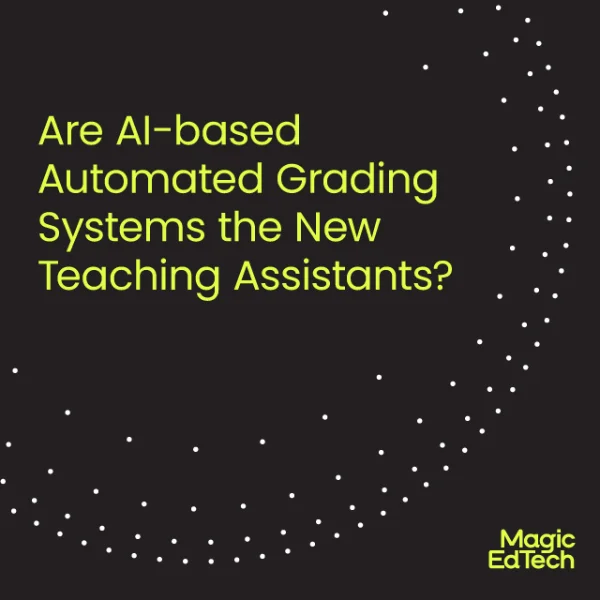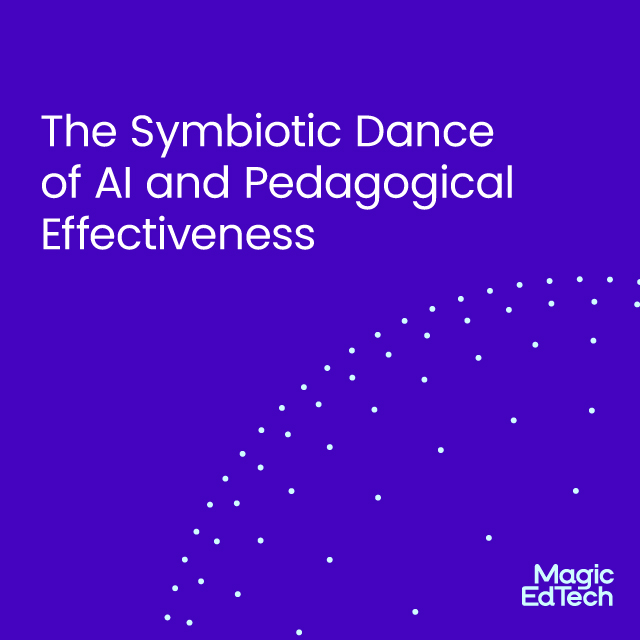Through the Looking Glass: Learning in 2030 – AI or AGI?
- 29 November, 2023
- Reading Time: 7 mins
Artificial general intelligence (AGI) is a form of AI that possesses the ability to understand, learn, and apply its knowledge across a wide range of tasks and domains. AGI can be applied to a much broader set of use cases and incorporates cognitive flexibility, adaptability, and general problem-solving skills. Gartner
While there are plentiful numbers and statistics to support the fact that AGI is indeed a megatrend such as the one that states that the global Artificial Intelligence market size is expected to grow at a Compound Annual Growth Rate (CAGR) of 36.8% during the forecast period, to reach USD 1,345.2 billion by 2030 from USD 150.2 billion in 2023. But the most compelling reason to believe that AGI is not just another buzzword, but the number one tech disrupter of our times is when the tech stalwarts start speaking in the same voice.
To begin with, Sam Altman – it was he, who first forecasted that GPT-3, and GPT-4 were all steps towards achieving AGI or Artificial General Intelligence. In his interaction with The Wall Street Journal, Altman had said that “affordable, abundant energy and AGI” would be the two things that would matter the most for businesses in the next decade.
Elon Musk, the maverick businessman also expects usable AGI to hit the market in a few years. Possibly, around 2029. With no one now debating whether AGI is indeed a possibility and instead debating on when AGI will become an irrevocable part of the business landscape much like AI, hence, whether one likes it or not, AGI is here and it is the new Megatrend.
AI and AGI: Err… not the same thing!
Why is everyone talking about AGI? How does it provide unique repositioning abilities for most business organizations in the running today? More importantly, how can it be applied to, the education industry? But more about that later, as we first unravel the mystique of AGI.
So, here’s defining it broadly, in the words of one of the founders of OpenAI, Ilya Sutskever. “In broad terms, AGI typically means artificial intelligence that matches (or outmatches) humans on a range of tasks. But specifics about what counts as human-like, what tasks, and how many all tend to get waved away: AGI is AI, but better.”
To begin with, AI and Artificial General Intelligence are not the same. For one, the spectrum of work and open-ended learning for AI is limited.
With AI, it is possible for organizations whether these are in Finance or in Education to carry out a breathtaking array of tasks in a fraction of the time that it takes a human brain to do it, more efficiently and accurately, minus the errors and the biases that crop up when humans take up the endeavor. It does it all using pe-trained algorithms and masses of data that have been anointed to aid the task. But whether it can figure out things on its own is where the AI will have to enlist help from the human in the loop.
AGI on the other hand is when these machines develop the capability to think and reason like humans. It then reasons on its own, skills itself, and applies its knowledge to tasks that are beyond the scope of human intelligence. For example, when it comes to ChatGPT, which can be considered a form of AGI, though there could be plenty of debates on that narrative, we still cannot tell how it functions and how it learns. And that is exactly what AGI is all about. AGI focuses on creating systems that are capable of learning and reasoning in a human-like way and can apply their knowledge to any task.
AGI: Leaving a Deeper Impact than AI
AGI is not just meant for robotics. Whether it is finance and capital markets, supply chain, or healthcare, AGI can redefine the future. Especially, when it comes to education, there is a lot that Educational organizations can accomplish with AGI. As the next frontier of learning, and education, here’s how AI has already been redefining the future of education and learning and how Artificial General Intelligence promises to take it a step further.
Real Personalized Education for Higher Education
One of the biggest and most critical requirements of the current generation when it comes to education and learning is personalization. As the need for personalized prompts and learning grows, the need to factor in AI only grows stronger. With Artificial General Intelligence, Educational Institutions can take personalization a step further and provide a personalized learning path depending on key factors such as learning abilities, interests, skill sets, positive outcomes, grades, etc. One excellent example is IBM Watson. It has been proven to be highly impactful, with students scoring better (average scores of 60% higher) on tests where they resorted to IBM Watson than those who did not.
Automation of Administrative Tasks
Another key area where AI is all set to make a marked difference is Administrative Tasks. As the amount of data in the education sector proliferates, the need for AI to drive insightful inferences increases. With AI, it becomes possible for administrators to automate routine tasks, consolidate and aggregate data for corroboration, and carry out other such tasks, leaving educators to focus more on teaching and mentoring. In time, the education community can expect Artificial General Intelligence to facilitate the creation of smarter and more intelligent learning platforms that are highly responsive to student needs in real-time, can carry out a multitude of tasks, while at the same time self-learning from it, and accessing itself, and asking for assistance thereby streamlining processes considerably, breaking the silos and enhancing operational efficiency in educational institutions.
Create Adaptive Learning Environments
AI tools have already been at the forefront of change when it comes to the education sector enabling all stakeholders (not just the users) greater freedom to engage in the learning experience thereby fostering greater levels of engagement, transparency, accountability, accessibility, and inclusivity. For example, with AI, students can have better access to diverse learning needs like speech-to-text, text-to-speech, and other assistive technologies that support a highly inclusive learning environment.
How AGI will take it a step further will depend on how it allows for continuous adaptation. As a student progresses, the system adapts its approach to ensure that the learning experience remains challenging and engaging, avoiding monotony or frustration. And devising assessment strategies, and tailoring evaluations to suit individual learning styles and preferences. Not just the student community, other stakeholders such as the Board and Higher-up management have insight into what kind of programs or engagement devices drive better outcomes utilizing the data generated more incisively. Not just the administrators, board, and management, but even the educators themselves can improve student outcomes and use AGI to identify trends, track student performance, and make informed decisions to improve teaching strategies.
Truly Transformative Learning for Everyone
The true test of AGI is that it must not only be able to perform a range of tasks, but it should also have the capability to imbibe learning and access its performance while requiring assistance from the human in the loop in rare instances. That these AI-enabled platforms transform education is evident from Carnegie Learning’s software which improves student outcomes significantly – students who used the software scored an average of 63% higher on tests than those who did not. AGI can transform learning through Natural Language Processing Capabilities in the LMS or the Tutoring System. This facilitates more effective communication between the system and the student, whether it is understanding their requirements, or generating feedback in a manner that seems natural and not robotic. With a deeper understanding of student behavior, and with more effective monitoring of student progress and identification of potential issues, AGI can truly change education.
Despite AGI the Human Factor Remains Irreplaceable
The question most often being asked is whether AGI (when that comes about) will pose a threat to the human factor in education. As AI continuously learns and in time is expected to innovate as humans do, will it end up posing an existential threat to educators and other stakeholders involved in higher education and learning? Most likely not. While the canvas of AGI is indeed vast, and there is a lot that an educational organization can achieve by partnering with a tech company with ingrained AI capabilities, it still will not imply that a state of complete autonomy can be achieved with AI. While that might be possible in the realm of science fiction, building super-intelligent machines, that oversee each granular aspect of the business is not possible yet. The human factor will remain paramount for decision-making and for ensuring the success of student outcomes, with AGI facilitating streamlined functioning of the multiple applications (thereby less noise and chaos) and carrying out the administrative tasks in a fraction of the time that it was done earlier. Further, as education evolves and becomes less linear, the student-teacher relationship is expected to evolve in a manner that will require more human involvement than less.





